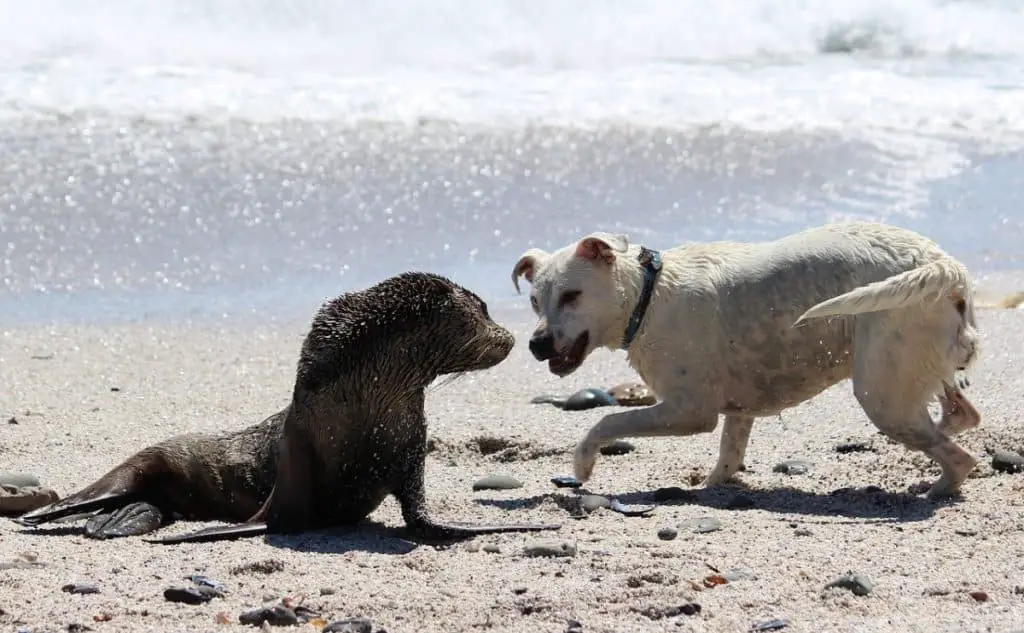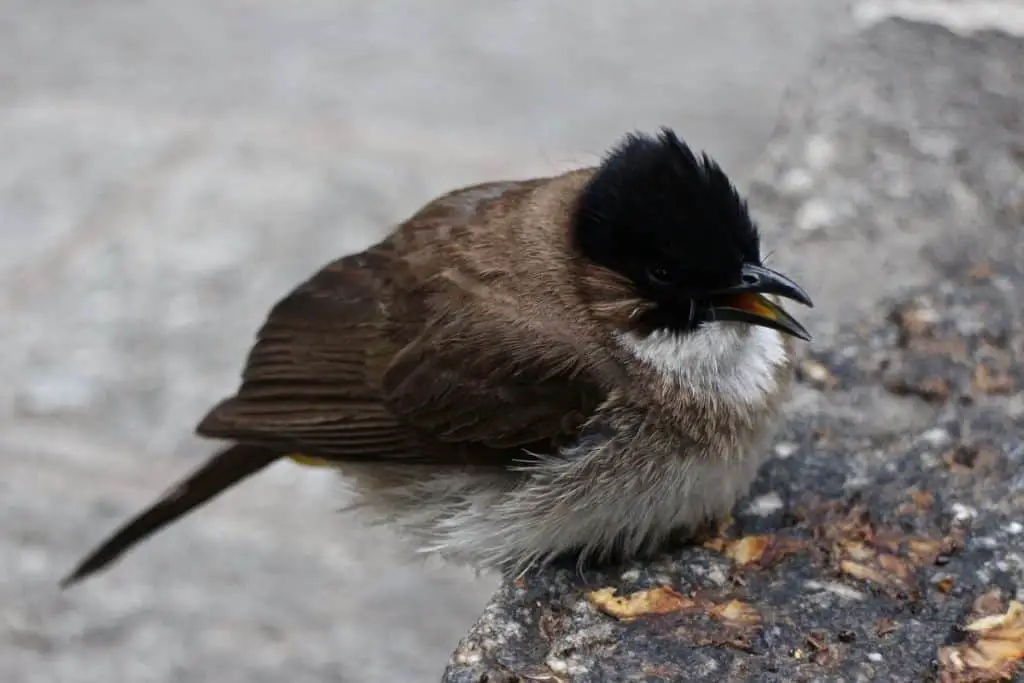When we injure ourselves, we seek out medical care. A broken bone will need realigning, a cast, and even extensive surgery to correct.
Animals that break bones are at a severe disadvantage to healthy animals. Predatory animals cannot hunt to find food, and prey animals would find it difficult to escape. Birds with broken wings will not be able to fly, leaving them open to predators. Marine mammals would have the least trouble as the water keeps them buoyant.
Breaking a bone isn’t a problem for humans since we have access to hospitals and excellent medical care. In the wild, things are different. So, what do animals do when they break a bone?

Severity Is Key
There is no medical intervention for wild animals when it comes to breaking a bone. The best chance of survival is a small, clean bone break that does not need realigning. Even in this scenario, the animal is still in grave danger.
In a large social group, injured animals fare better than solitary animals. They have the protection of the herd should predators try to chance an easy meal. This means the injury is less likely to be a hindrance.
Should animals avoid being hunted, they will still need to cope with the pain and limited mobility while their injury heals. This could take weeks and be made worse by weight-bearing or sudden jolting if the animal needs to run from a predator.
More significant breaks may render the animal defenceless against predators. They may not be able to move at all. This kind of injury is a death sentence. For predatory animals, a severe bone break means they cannot hunt, so they would eventually starve to death.
A study by London Hospital found that long-bone fractures are more common than initially thought, and most will heal. They may not necessarily heal well, but definite healing does occur, and in many cases, skeletons show that the bone break was not fatal.
Alligators can easily break bones with their powerful bite. An injured animal would either drown due to their inability to swim, or they would not be able to escape, and the alligator would eventually pull them under the water.
If the animal did manage to get out of the water, the break would be so severe that they would be unable to walk and would likely die soon after.
The mammal skull is amazing. Find out more here
Species Differ
The species of animal suffering the bone break will affect their survival chances. For instance, a monkey breaking an arm would be almost certainly fatal since they spend most of their lives in the trees.
For predatory animals, bone breaks are certainly a death sentence. Any physical injury means they cannot hunt or run, so they would be incapable of finding food and eventually starve to death.
Bone breaks for marine animals may not be as severe as those in land animals. In water, buoyancy means animals do not necessarily need to expend as much energy. Prey animals would not swim as fast with a bone break, so they would be at greater risk of predation, but this is far less significant than land animals.
Marine predators such as orcas rely on speed to catch prey, but they also hunt in pods, making them less likely to starve. Orcas also tend to feed on larger animals like seals or whales, so food would still be readily available.
Open Wounds & Deformities
Where a bone break causes an open wound, death is a certainty. An open injury leaves the injured animal susceptible to infection due to dirt getting into the wound. A sick and injured animal has very little chance of survival.
If the infection does not cause the animal’s death, the blood loss from the open wound definitely would. Animals cannot afford to suffer much blood loss, especially prey animals. Blood attracts predators, so an open wound is like a buffet sign.
When bones are broken and the animal manages to survive, the bones will naturally begin to heal. Unfortunately, this may mean it heals at an unnatural angle, leaving the animal with a permanent and often painful limb deformity.
This leaves them vulnerable to predators and less able to forage for food or keep up with the herd if they are a social species.
In rare cases, an open wound can lead to necrosis or gangrene. This is a condition in which infected tissue dies. Eventually, the toxins released by the dead tissue would cause damage to the animal’s internal organs, and they would suffer a slow and painful passing.
Wings
In the case of birds, any degree of wing break would likely be the end of them. Birds cannot fly if they have an injury to their wing.
Such injuries could be caused by predators, fights with other birds, or flying into manmade structures like windows or doors.
It is common in urban areas to find injured birds hiding under trees or hedges. These birds would not survive for long in such situations, as larger birds, squirrels or cats would likely feed on them.
Fledglings leaving the nest too early are likely to break wing bones. Some birds will push fledglings of other species out of the nest if they want the space for themselves.
A startled bird may try to fly as a natural response to danger, but this would only worsen the injury to its wing. Smaller bird species can also die of shock due to the pain caused by their injury.
Do you know where snakes live? Find out here

Moulting
In arthropods, bone breaks are nearly always fatal. Most insects will moult. This includes arthropods such as spiders, scorpions, mantis and shrimp.
A bad moult can result in bone breaks and limb deformities, which will cause a knock-on effect on all future moults. In some cases, this can cause death before the process is complete.
During the moulting process, their exoskeletons are much softer and more susceptible to injury. Where the break has resulted in the loss of the limb, the animal may be unable to regenerate that lost limb, leaving them with a permanent and debilitating deformity.
Horns and antlers
Some animals, like moose, deer and reindeer, have impressive antlers. While these are biological marvels, they also cause many injuries. Antlers and horns are made of cartilage, a substance found in bone.
Male moose lose their antlers every winter and regrow them in spring. Other animals will shed the lining of their antlers after the breeding season.
When males rut for the right to mate with females, they use their antlers as weapons. This can result in sections breaking off or open wounds to the opponent. An antler can be snapped off close to the head in some cases, resulting in significant bleeding.
Open wounds are a breeding ground for bacteria and infection and draw in predators attracted to the scent of blood.
Do you know which animals can take down an elephant? Find out here in this article I wrote.
Physiological and psychological responses
The most natural response to pain from an injury is to stop eating and drinking. A wild animal may choose to find a place to shelter themselves rather than continuing to forage or hunt for food.
A severe break can be so painful that the animal goes into shock. This puts them at risk of predation or attack from other animals of their species. They are also at increased risk of dehydration or starvation due to a lack of food or water.
An injured animal may also behave in an abnormally aggressive way. This is due to the surge in cortisol caused by the injury. Prolonged high levels of cortisol lead to behaviours associated with depression and PTSD.
References
Animal Ethics. (2015, October 28). Physical injuries in wild animals. Retrieved from Animal Ethics: https://www.animal-ethics.org/situation-of-animals-wild/physical-injuries-wild-animals/
Blair, J., & Wassersug, R. J. (2000). Variation in the pattern of predators induced damage to tadpole tails. Copeia, 390-401.
Bulstrode, C., King, J., & Roper, B. (1986). WHAT HAPPENS TO WILD ANIMALS WITH BROKEN BONES? The Lancet, Vol 3 Issue 8471, 29-31.
Delahay, R. J., & Smith, G. C. (2008). Management of disease in wild mammals. New York: Springer.
Heithaus, M., & Frid, A. &. (n.d.). Shark-inflicted injury frequencies, escape ability, and habitat use of green and loggerhead turtles. Marine Biology, 229-236.
help wildlife. (2015, May 5). Helping birds with broken wings. Retrieved from help wildlife: https://helpwildlife.co.uk/sick-or-injured-wildlife/brokenwings/
Hollwarth, A. (2020, February 13). Fracture management in wild birds. Retrieved from Veterinary Practice: https://veterinary-practice.com/article/fracture-management-in-wild-birds
RSPB. (2018). If you find an injured bird. Retrieved from RSPB: https://www.rspb.org.uk/birds-and-wildlife/advice/how-you-can-help-birds/injured-and-baby-birds/if-you-find-an-injured-bird/
Schoener, T. W. (1979). Inferring the properties of predation and other injury-producing agents from injury frequencies. Ecology, 1110-115.

